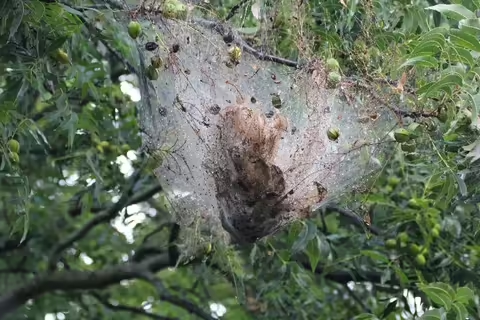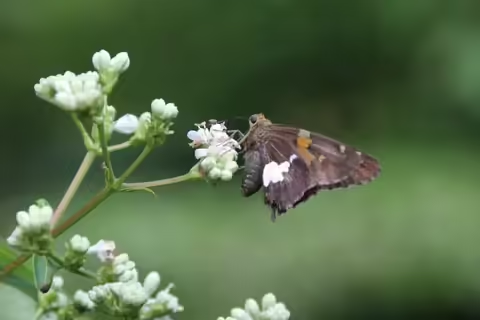Early signs of the coming fall had me screaming, literally! Nocturnal orb-weaver spiders (commonly Neoscona crucifera and Aranus cavaticus) start showing up in late-summer to early-fall and have the habit of building their huge webs in the dark of night, then consuming them and their victims before daylight the next day. If you don’t wander around in the dark, there is usually no problem avoiding a full frontal web experience. Here’s the problem, I walk around in the dark. Anyone with a dog probably does. With the days getting shorter, my morning dog walk through the trees is now in the dark...ahem, a preferred web building site for nocturnal orb-weavers in my jungle. Let’s just say spiders are normally a fascination for me, but clearly not when a relatively huge spider is running for its life across my face to parts unknown. Hopefully, the neighbors slept through the ruckus. I now walk with my arms extended in front of me, hoping to avoid a repeat up-close and personal encounter with these harmless, beautiful and beneficial spiders. Harmless is a relative term I realize. A few years ago, one of the visiting hummingbirds ran afoul of an orb-weaver’s web anchored to the hummingbird feeder. The spider ran for the hills. In its thrashing, the hummingbird managed to wrap itself up like a mummy in the webbing. I’m convinced it would not have escaped without my assistance, and the little guy let me know he hasn’t pleased to be handled. He didn’t know how lucky he was that I found him, but who knew a hummingbird could peep so meanly. After cleaning the webbing away, having him shoot out of my hand like a bottle rocket will be a forever cherished memory.
Leaves on my cherry trees already yellowing and dropping from the tree is not an early sign of the coming fall…it is a clear indication of a problem. Upon closer inspection, the small circular purple spots I found are very indicative of cherry leaf spot, a common, but potentially serious fungal disease of both sweet and tart cherries. Damp conditions with temperatures between 60 and 68 degrees F are optimal for disease development...exactly what we had this spring. My bad, I did not catch it in a timely manner. Cherry leaf spot is not an outright killer of trees but it can over time weaken a tree through repeated early defoliations, making the tree more susceptible to winter injury. Fruit quality and yield can also suffer. Since I don’t have spray equipment designed to reach the top of my larger trees, I will have to employ a different control method focused on sanitation. Normally I leave leaves stay in place, but since the disease overwinters on the infected fallen leaves much like with apple scab, I will need to collect and destroying all I can to reduce the inoculum available to reinfect my trees next year. I need to do this now before the other trees start dropping their leaves too.
I noticed a couple of fall webworm nests in my pecan tree. I know they are fall webworms and not eastern tent caterpillars because the protective nests are on the end of the branches, enclosing foliage…eastern tent caterpillar nests are built in the crotches of limbs. Though there can be some overlap, fall webworms occur later in the season…as suggested by its common name. Mature caterpillars eventually drop to the ground and pupate in the leaf litter. The adult moth is bright white, with a hairy body. For now, the squirrels do more damage to my pecan tree harvesting nuts than the fall webworms do feeding on leaves, so I just leave them alone to serve as food for birds and other wildlife. We never hear about our native species as invasive pests in other countries. Now you have. Fall webworm was accidentally introduced in Europe in the 1940s, and has since spread throughout much of Europe, parts of China, North Korea and Japan.
Unlike cherry leaf spot, there are definitely other early signs of fall that are much anticipated, like late-summer-blooming plants. I recently walked by one of my seven-son flowers (Heptacodium miconioides) in full bloom and it was abuzz with pollinators, including those that really do buzz, like the bees and flies, but also a number of different types of butterflies. It always stops me in my tracks to just stare in wonder.



